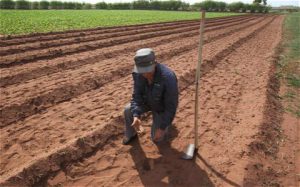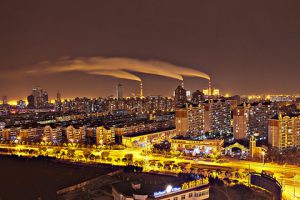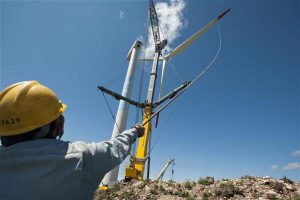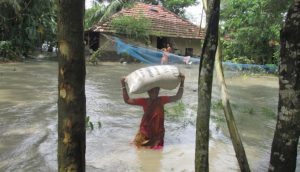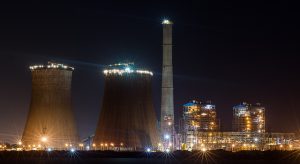Climate change, if left unchecked, will increase the likelihood of severe, pervasive and irreversible impacts on people and ecosystems. With these words, the world’s scientists have made an impassioned appeal to the world’s policymakers to combat what has been described as the challenge of our times.
Releasing the consolidated summary for policymakers of the fifth assessment report of the Intergovernmental Panel on Climate Change (IPCC), the scientists and economists also held out a ray of hope. “Options are available to adapt to climate change and implementing stringent mitigations activities can ensure that the impacts of climate change remain within a manageable range, creating a brighter and more sustainable future,” they said
The synthesis report released with the summary distils the findings of over 800 scientists and is the most comprehensive assessment of climate change undertaken yet. “Our assessment finds that the atmosphere and oceans have warmed, the amount of snow and ice has diminished, sea level has risen and the concentration of carbon dioxide has increased to a level unprecedented in at least the last 800,000 years,” said Thomas Stocker, Co-Chair of IPCC Working Group I [made up of climate scientists].
How China will be affected
The report shows how climate change is affecting key aspects of life in various parts of the world. In the section on Asia, it makes these key points about China:
• There has been an observed temperature increase of 0.4-2.5°C in the region, with most warming in central Russia, North Korea, Mongolia, and northern China.
• Over the mid-term (2046–2065), an increase of 2-4°C is projected for the region with the warmest temperatures concentrated in Iraq, Saudi Arabia, Iran, Russia, China, Mongolia, Nepal, and Bhutan.
• Over the long-term (2081–2100), an increase of 4-6°C is projected over similar areas.
• Over the mid-term (2046–2065) there is a 10 to 20% decrease of precipitation projected in March – May for portions of Southeast Asia including Thailand, Laos, Burma, Cambodia, and Vietnam and a 30% increase during September – November for Saudi Arabia, Yemen, Oman, Mongolia, Russia, China, and Pakistan.
• Annual mean soil moisture, which affects how well plants can grow is projected to decrease across much of the western portion of the region (Turkey, Russia, Syria, Iraq, Iran), Nepal, Bhutan, China, Burma, Laos, Vietnam, Cambodia, Thailand, Malaysia, portions of Indonesia, Japan, North Korea, Mongolia while there are small increases projected for Saudi Arabia, Yemen, India, Papua New Guinea, Pakistan, India, and Bangladesh.
• Annual runoff, that is the amount of water discharged from major rivers, is projected to decrease (-30% to -40%) across much of the already dry western portion of the region (Middle East) and increase (up to 40%) in some of the flood-prone regions, such as northern China, Pakistan, India, and in Southeast Asia.
• Fisheries, a major source of livelihoods and protein for many countries, are also projected to be negatively impacted by climate change, especially in South and Southeast Asia.
• Warming temperatures may adversely affect rice and other crops growing near their heat stress limits in places such as Pakistan/North India (during October), South India (April, August), East India/Bangladesh (March-June), Myanmar/Thailand/Laos/Cambodia (March-June), Vietnam (April, August), Philippines (April, June), Indonesia (August) and China (July-August).
• The most vulnerable regions for reduced rice yield is projected for western Japan, eastern China, the southern part of the Indochina peninsula, and the northern part of South Asia.
• Winter wheat yields could increase in some areas, such as Huang-Huai-Hai Plain, China’s most productive wheat growing region, due to warmer night time temperatures and higher precipitation.
• Maize yield could decrease by 25% by the 2080s (compared to 1961-1990) in the North China Plain.
• Three of the world’s five most populated cities (Tokyo, Delhi, and Shanghai) are located in areas with high risk of floods – the intensity and frequency of which are expected to increase.
• By the 2070s, the top Asian cities with the most people at risk (including all environmental and socioeconomic factors) to coastal flooding are expected to be Kolkata, Mumbai, Dhaka, Guangzhou, Ho Chi Minh City, Shanghai, Bangkok, Rangoon, and Hai Phòng.
• Climate change is also expected to affect the distribution of dengue fever and schistosomiasis, for example, it is projected that the latter will increase its distribution in northern China due to climate change.
• Permafrost is projected to decrease 20-90% by 2100 in North Asia and the Qinghai-Tibet Plateau, which will have substantial impacts to erosion, infrastructure, and livelihoods.
• Decreasing precipitation will exacerbate the growing population and expanding water withdrawal, ultimately leading to more water scarcity in northern China.
Governments urged to act immediately
Reacting to the release of the report, UN Secretary General Ban Ki Moon said: “This Report offers three key messages: One: Human influence on the climate system is clear – and clearly growing. Second, we must act quickly and decisively if we want to avoid increasingly destructive outcomes. Three: We have the means to limit climate change and build a better future.”
“The report found that the world is largely very ill-prepared for the risks of a changing climate, especially the poor and most vulnerable who have contributed least to this problem.”
Samantha Smith, leader of WWF’s Global Climate & Energy Initiative, said, “The world’s best scientists have given us a good, clear measuring stick for what the world needs to do to combat rampant climate change. What the IPCC is really telling us is that we have an historic opportunity to secure a clean, just and safer future for the world and the people that live in it.”


